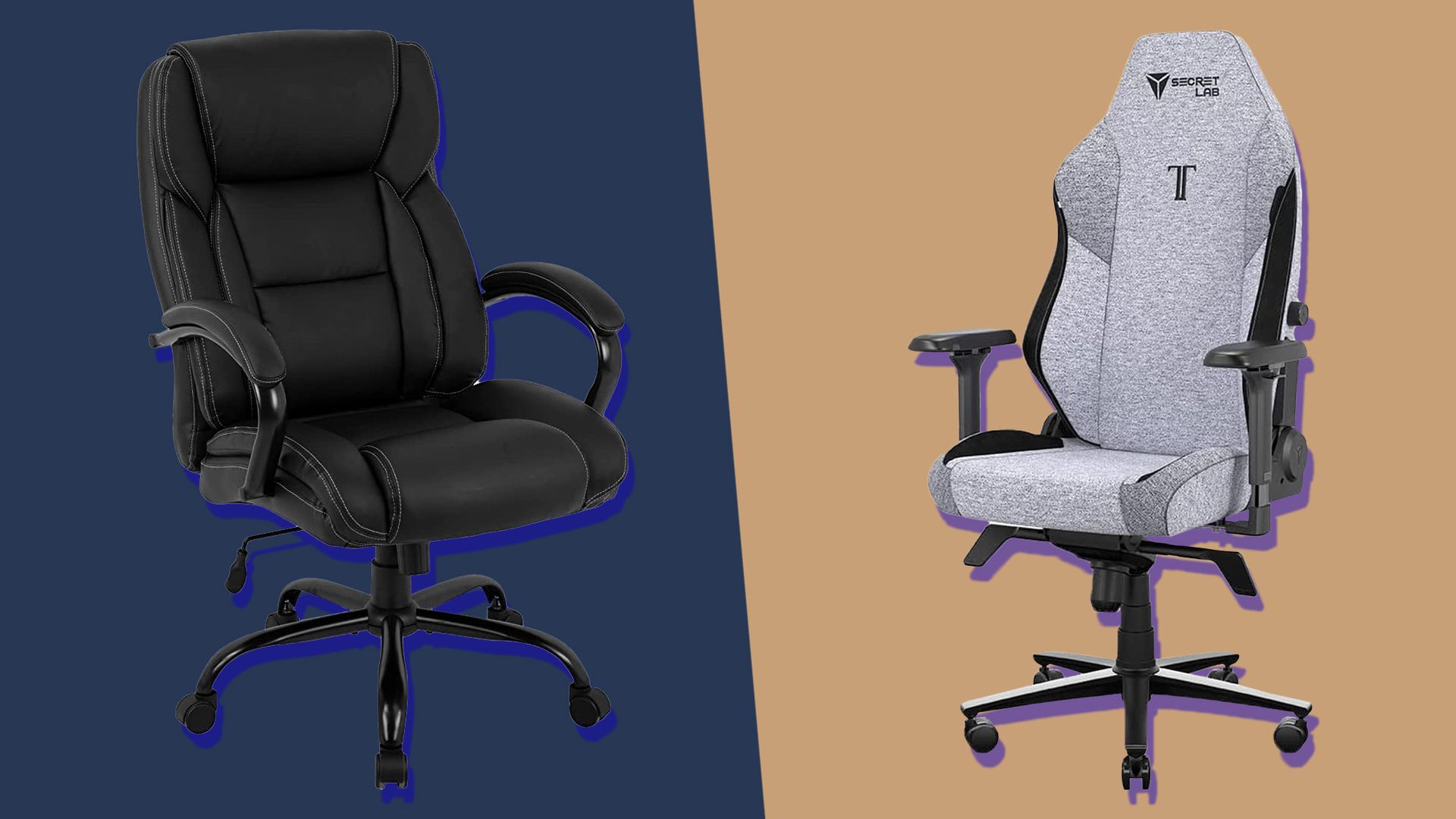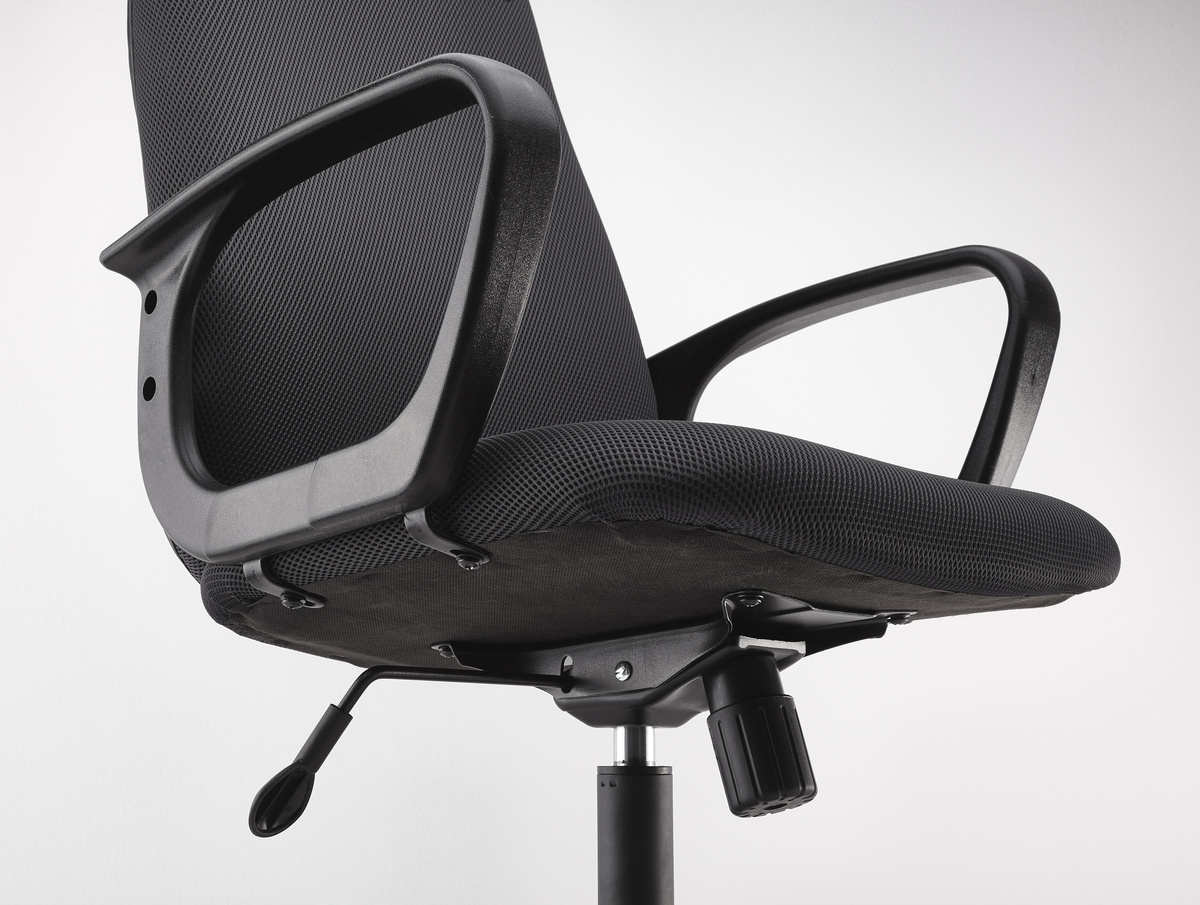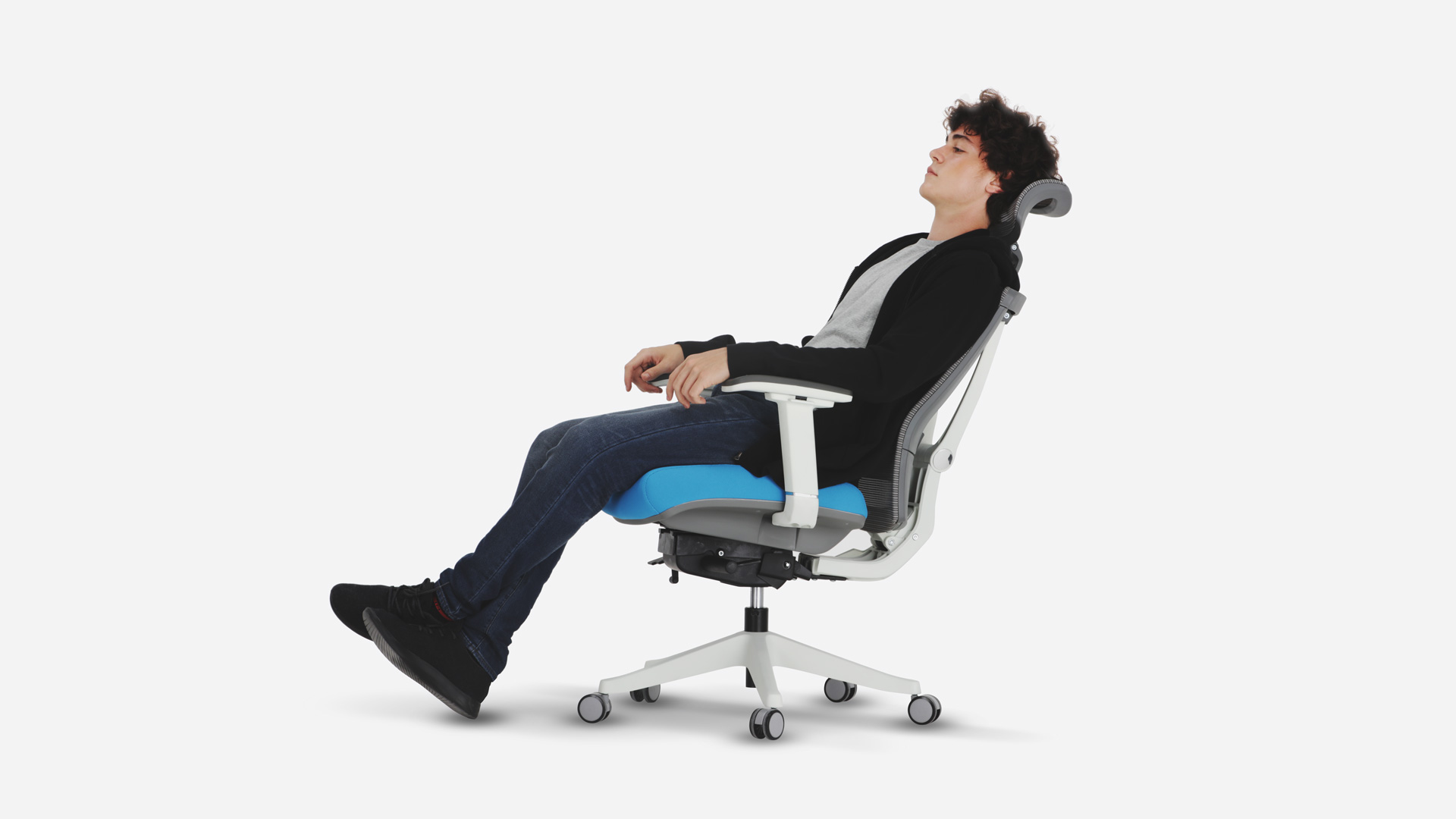Home>Furniture & Design>Office Furniture>What Kind Of Office Chair Is Best For Sciatica


Office Furniture
What Kind Of Office Chair Is Best For Sciatica
Modified: January 20, 2024
Find the best office chair for sciatica relief with our expert guide. Discover ergonomic office furniture and design tips for a pain-free work environment.
(Many of the links in this article redirect to a specific reviewed product. Your purchase of these products through affiliate links helps to generate commission for Storables.com, at no extra cost. Learn more)
**
Introduction
**
Welcome to the world of office chairs and the impact they can have on your well-being, particularly if you suffer from sciatica. The right office chair can make a world of difference for individuals dealing with the discomfort and pain associated with this condition. In this article, we will explore the best types of office chairs for sciatica, shedding light on the features that can alleviate discomfort and promote better posture and support. Whether you spend long hours at a desk due to work or personal activities, choosing the right office chair is crucial for managing and potentially alleviating the symptoms of sciatica.
Now, let's delve into the intricacies of sciatica and how the choice of office chair can play a pivotal role in managing this condition effectively.
**
Key Takeaways:
- Choosing the right office chair is crucial for managing sciatica. Look for features like lumbar support, adjustable height, and ergonomic design to alleviate discomfort and promote better posture.
- Types of office chairs like ergonomic, kneeling, and exercise ball chairs can provide relief for sciatica. Investing in a supportive chair can make a tangible difference in managing this condition.
Read more: What Is The Best Office Chair
Understanding Sciatica
**
Before delving into the specifics of office chairs suitable for individuals with sciatica, it is important to understand the nature of this condition. Sciatica refers to pain that radiates along the path of the sciatic nerve, which branches from your lower back through your hips and buttocks and down each leg. This discomfort typically affects only one side of your body and can range from a mild ache to sharp, excruciating pain. It is often caused by a herniated disk, bone spur on the spine, or narrowing of the spine (spinal stenosis).
Individuals with sciatica may experience a variety of symptoms, including numbness, tingling, or weakness in the affected leg or foot. The pain can be debilitating, making it challenging to sit for extended periods, which is particularly problematic for those with desk jobs or who spend prolonged periods at a computer.
Understanding the symptoms and impact of sciatica is crucial in selecting an office chair that provides the necessary support and comfort to alleviate these discomforts. Now, let’s explore the common causes of sciatica to gain a comprehensive understanding of the condition.
**
Causes of Sciatica
**
Sciatica can be triggered by various underlying conditions that affect the sciatic nerve. One of the primary causes is a herniated disk, also known as a slipped or ruptured disk. This occurs when the soft inner material of the disk protrudes through the tough outer covering, putting pressure on the adjacent nerve roots, including the sciatic nerve.
Another common cause is spinal stenosis, a condition characterized by the narrowing of the spinal canal, which exerts pressure on the nerve roots, including the sciatic nerve. This compression can lead to pain, numbness, and muscle weakness in the legs.
Furthermore, sciatica can be attributed to spondylolisthesis, a condition in which one vertebra slips forward over the vertebra below it, causing the opening for the nerve roots to narrow, resulting in sciatic nerve compression and subsequent pain.
Additionally, the development of bone spurs on the spine, a result of osteoarthritis, can lead to sciatica. These bony growths can encroach on the space normally reserved for the nerve roots, causing irritation and pain along the path of the affected nerve.
Understanding the root causes of sciatica is vital in selecting an office chair that addresses the specific discomfort associated with this condition. Now that we have explored the causes, let’s delve into the importance of choosing the right office chair to alleviate sciatic pain and discomfort.
Importance of Choosing the Right Office Chair
When dealing with sciatica, the significance of selecting an appropriate office chair cannot be overstated. A well-designed office chair can provide crucial support and comfort, effectively mitigating the symptoms associated with sciatica. Prolonged sitting can exacerbate sciatic pain, making it essential to invest in an ergonomic chair that promotes proper posture and minimizes pressure on the lower back and legs.
By choosing a chair specifically tailored to address the needs of individuals with sciatica, you can significantly reduce discomfort and enhance your overall well-being. A supportive office chair can alleviate the strain on the spine and provide adequate lumbar support, which is essential for those dealing with sciatic nerve pain.
Moreover, an ergonomically designed office chair can help distribute body weight evenly, preventing excessive pressure on the lower back and hips. This, in turn, reduces the likelihood of exacerbating sciatic nerve pain during extended periods of sitting.
Furthermore, a well-cushioned seat with ample padding can minimize pressure points and enhance overall comfort, allowing individuals with sciatica to sit for longer durations without experiencing heightened discomfort. Additionally, adjustable features such as seat height, lumbar support, and armrests can further personalize the chair to accommodate specific needs, offering tailored support for individuals with sciatica.
Choosing the right office chair is not merely a matter of comfort; it is an investment in your health and well-being. With the right chair, you can create a conducive environment that promotes proper posture, reduces strain on the lower back, and minimizes the impact of sciatic nerve pain, ultimately enhancing your productivity and quality of life.
Look for an office chair with good lumbar support and adjustable seat height to relieve pressure on your sciatic nerve. A chair with a comfortable cushion and proper ergonomic design can also help reduce discomfort.
Features to Look for in an Office Chair for Sciatica
When searching for an office chair suitable for individuals with sciatica, several key features can significantly contribute to alleviating discomfort and promoting better posture. Understanding these features is essential in making an informed decision when selecting the most suitable chair for your specific needs.
1. Lumbar Support:
An office chair with excellent lumbar support is crucial for individuals with sciatica. Look for a chair that provides firm and adjustable lumbar support to maintain the natural curve of the lower spine, reducing strain and pressure on the sciatic nerve.
2. Adjustable Seat Height and Depth:
Opt for a chair with adjustable seat height and depth to ensure proper alignment and distribution of body weight. The ability to customize these settings allows for optimal positioning, minimizing pressure on the lower back and legs.
3. Seat Cushioning:
Ample seat cushioning is essential for individuals with sciatica. Choose a chair with sufficient padding to reduce pressure points and enhance overall comfort during prolonged sitting. Memory foam or high-density foam cushions can provide excellent support and alleviate discomfort associated with sciatic pain.
4. Adjustable Armrests:
Adjustable armrests play a significant role in promoting proper posture and reducing strain on the upper body. Look for a chair with height-adjustable and padded armrests to support the arms and shoulders, thereby minimizing tension in the upper back and neck.
5. Reclining Mechanism:
An office chair with a reclining feature can offer relief by allowing you to change positions and reduce pressure on the lower back. A reclining mechanism with a tilt tension adjustment enables you to recline comfortably while maintaining proper support for the lower back.
6. Breathable Fabric:
Opt for a chair with breathable fabric to promote air circulation and reduce heat buildup, enhancing overall comfort during prolonged sitting. Proper ventilation can prevent discomfort associated with perspiration and skin irritation.
By prioritizing these features when selecting an office chair, individuals with sciatica can create a supportive and comfortable seating environment that effectively addresses their specific needs, ultimately contributing to enhanced well-being and productivity.
Read more: What Is A Task Chair Vs. Office Chair
Types of Office Chairs for Sciatica
When seeking an office chair specifically tailored to alleviate the symptoms of sciatica, several types stand out for their ability to provide the necessary support and comfort. Understanding the characteristics of each type can guide individuals with sciatica in choosing the most suitable chair for their unique needs.
1. Ergonomic Office Chairs:
Ergonomic chairs are designed to promote proper posture and provide comprehensive support, making them an excellent choice for individuals with sciatica. These chairs feature adjustable lumbar support, seat height, and armrests, allowing for personalized customization to accommodate specific comfort and support requirements.
2. Kneeling Chairs:
Kneeling chairs can be beneficial for individuals with sciatica as they promote a more open hip angle, reducing pressure on the lower back and providing natural spinal alignment. By distributing body weight between the buttocks and shins, kneeling chairs can alleviate strain on the lower back and minimize discomfort associated with sciatic nerve pain.
3. Exercise Ball Chairs:
Exercise ball chairs, also known as stability ball chairs, offer an alternative seating option for individuals with sciatica. These chairs engage the core muscles, promoting better posture and spinal alignment. The dynamic nature of sitting on an exercise ball can help reduce pressure on the lower back and alleviate discomfort associated with prolonged sitting.
4. Recliner Chairs:
Recliner chairs with lumbar support and adjustable features can provide relief for individuals with sciatica. The ability to recline and adjust the chair’s position can help reduce pressure on the lower back and offer a comfortable seating option for those experiencing sciatic pain.
5. Zero Gravity Chairs:
Zero gravity chairs are designed to distribute body weight evenly, promoting a neutral body position that can alleviate pressure on the spine and lower back. These chairs can be particularly beneficial for individuals with sciatica, offering a supportive and comfortable seating option that minimizes strain on the affected areas.
By exploring these types of office chairs, individuals with sciatica can identify the most suitable option to address their specific needs and enhance their comfort and well-being during prolonged periods of sitting.
Conclusion
Choosing the right office chair is paramount for individuals dealing with the challenges of sciatica. The impact of a supportive and ergonomically designed chair cannot be overstated, as it can significantly alleviate discomfort and promote better posture, ultimately contributing to enhanced well-being and productivity.
Understanding the nature of sciatica and its associated symptoms is crucial in selecting an office chair that addresses the specific needs of individuals dealing with this condition. By prioritizing features such as lumbar support, adjustable seat height, and ergonomic design, individuals with sciatica can create a conducive seating environment that minimizes strain on the lower back and legs.
Moreover, exploring the diverse types of office chairs, including ergonomic chairs, kneeling chairs, exercise ball chairs, recliners, and zero gravity chairs, provides individuals with a range of options to cater to their unique comfort and support requirements. Each type offers distinct benefits that can contribute to alleviating the discomfort associated with sciatica, allowing individuals to find a chair that best suits their needs and preferences.
Ultimately, the right office chair for sciatica can make a tangible difference in managing and mitigating the impact of this condition during prolonged periods of sitting. By investing in a chair that prioritizes support, comfort, and ergonomic design, individuals with sciatica can create a more conducive and comfortable workspace, promoting better posture and reducing the strain on the lower back and legs.
With the insights provided in this article, individuals can make informed decisions when selecting an office chair, empowering them to proactively address the challenges of sciatica and create a supportive and comfortable environment for their daily activities.
Frequently Asked Questions about What Kind Of Office Chair Is Best For Sciatica
Was this page helpful?
At Storables.com, we guarantee accurate and reliable information. Our content, validated by Expert Board Contributors, is crafted following stringent Editorial Policies. We're committed to providing you with well-researched, expert-backed insights for all your informational needs.















0 thoughts on “What Kind Of Office Chair Is Best For Sciatica”